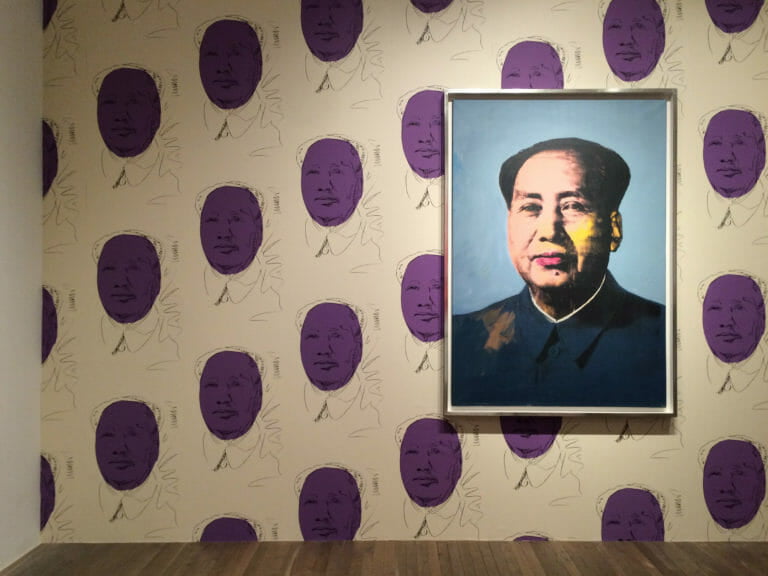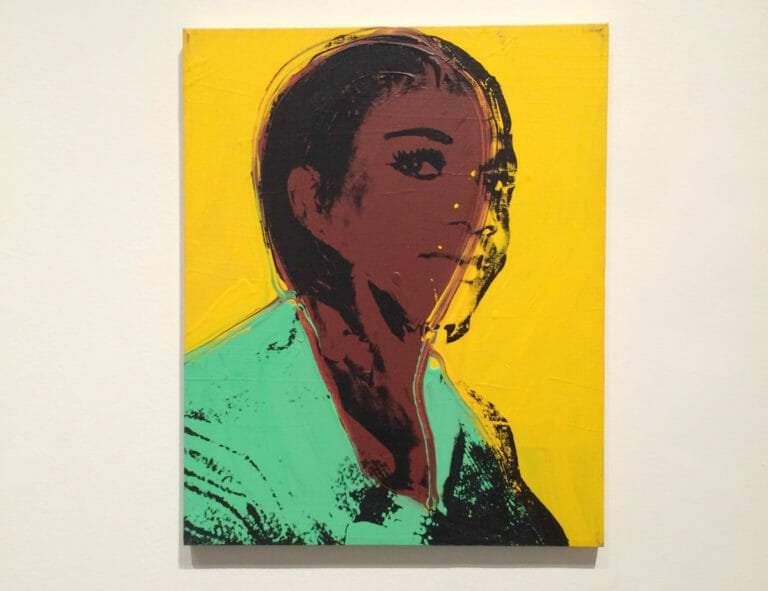NOTE: This exhibition has been extended until 15th November 2020.
Who is Andy Warhol?
We say ‘is’, because his image, and images, have persisted into modern culture so strongly that his presence seems to linger – long beyond his allotted 15 minutes of fame (or indeed, his 58 short years).
Everyone has their own idea of the artist, perpetuated in no small part by himself, seeking always to manipulate and distort his own public image. Pop art legend? Cult visionary? Or ultimately a sell-out? The Tate Modern’s new Warhol exhibition – their first in nearly 20 years – hopes to sift through the myths and root the art in his own personal story.
On your right as you enter is a small, unobtrusive passenger log – the sort of thing you’d skim over if it weren’t in such a prominent place. It details Warhol’s parents’ arrival in New York, signifying the beginnings of their pursuit of an American Dream that would see their son become one of the most famous Americans of all time, their lofty aspirations symbolically realised by his installation of silver balloons floating, just visible, in a gallery up ahead. These opening rooms set the stage for the exhibition’s biographically focussed narrative, from his upbringing in working-class Pittsburgh, Pennsylvania; to the artistic queer community of dancers, designers and poets he met in New York.
Warhol initially found success as a commercial illustrator in the 1950s, but longed to move onto more serious artistic endeavours. It wasn’t until the 60s that he developed his now iconic brand of pop art; a response to the commercial rise of print and photography over hand-drawn illustration. His signature use of hyper-colourised and repetitive images relied on a developing a similar mechanisation of the artistic process, using stencils and screen printing to speed up and standardise his image production. Here, he saw a unique opportunity to push the boundaries of fine art, mirroring in both its content and creation the mass production of postwar America.
The exhibition’s ‘Pop room’ is a roar of colour and consumption, with those iconic rows of soup tins and Coke bottles – and the curation highlights the complexities of Warhol’s relationship with it all. “A Coke is a Coke and no amount of money can get you a better Coke,” Warhol said admiringly in 1975 – and yet growing up, his family couldn’t afford soup and instead ate watered-down ketchup with salt. These mundane, everyday goods, though seemingly democratic, still represented something of a luxury to Warhol – and held power as a radically low focus for ‘high art’.
As consumerism flourished, so did the cult of celebrity. Applied to idols like Elvis and Marilyn Monroe – reduced down to her lips on one canvas – Warhol’s repetitive process puts these individuals, worshipped for their singularity, on the same level as a tin of soup. In Marilyn Diptych, painted in the months after her death, the actress’ smiling face fades to patchy, imperfect prints on grey. Another idol will soon come along – like cans and bottles, they are replaceable.
As you move through the room, this relentless replication becomes increasingly darker. The celebrities and soup cans, those totems of the American Dream, are juxtaposed with those heralding the decay of society. Unflinchingly applied to photographs of car crashes or racially-motivated police brutality, this cloning process – images replicated with minimal input from the artist, echoing their detached reproduction in the daily papers – both undermines and elevates their shock factor. We’re forced to assess our position as voyeurs as we’re faced with the image of a suicidal 14 year old girl falling to her death multiple times.
From sensationalist media to glamourised celebrities, Warhol was clearly fascinated by the way we present and consume images and identities. It was something he explored not just with others – as with the brooding criminal mugshots of his cannily titled Most Wanted Men (1964) and the intimate portraits in Screen Tests (1964-6) – but himself. On display here (for the first time in the UK) are three of his 100 bespoke wigs, which he purposely designed as prematurely silver so he could control his own process of ageing. He even sent a lookalike to take a lecture at Utah University in his place, because he thought he made a better Warhol for ‘public consumption’.
The performance of self is perhaps most keenly portrayed in one of the exhibition’s highlights; a selection of portraits of drag queens and trans women of colour. These paintings – the full series numbering some 250 portraits – has rarely been shown, their importance finally reevaluated as the lack of representation of non-binary, trans and gender-fluid individuals in art is starting to be recognised. The sitters, once anonymous, are identified here for the first time – and displayed in the largest ever numbers – in the UK.
However much you intend to interrogate the social and political themes within Warhol’s work, there are also exhibits here that elicit pure joy in themselves. You’ll walk through his interactive Silver Clouds installation (1965), intended to signal his retirement from painting (of course, it wasn’t). You’ll also experience his multi-sensory – and very contemporary-feeling – installation, Exploding Plastic Inevitable, which Warhol designed to showcase The Velvet Underground (and essentially invented the disco in the process). The following corridor, which looks deceptively sober by comparison, is a trove of record sleeves, magazines, novels and film posters that demonstrates the incredible diversity of disciplines Warhol turned his hand to, and his unwavering determination to make advances in art (even after being shot).
Numbering over 100 exhibits, the Tate has charted an artistic odyssey beginning with the literal voyages that a religious, working class, immigrant couple made to America in the 1920s. The argument that an artist is a product of his experiences may not be a radical one.
But you’ll sure be glad you went along for the ride.
NOTE: The Andy Warhol exhibition at the Tate Modern is now open again, and has been extended until 15th November. Tickets cost £22, and you’ll need to book in advance – you can do that right HERE.
Andy Warhol | Tate Modern, Bankside, SE1 9TG




